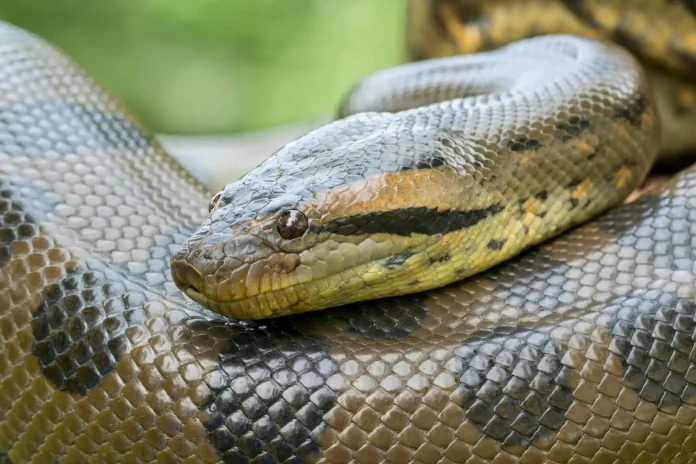A team of scientists, led by Professor Bryan Fry from the University of Queensland, has made a remarkable discovery of a new species of Anaconda in the remote Ecuadorian Amazon – a previously unknown species of giant Anaconda. This new species, named the northern green Anaconda (Eunectes akayima), is not only genetically distinct from its close relative, the green Anaconda, but may also be the largest snake species on Earth.
Revelation of New Species of Anaconda
The discovery was made while Professor Fry was filming with National Geographic for their upcoming Disney+ series “Pole to Pole with Will Smith.” The critical role of the Waorani native people in facilitating this discovery cannot be overstated.
“Our team received a rare invitation from the Waorani people to explore the region and collect samples from a population of anacondas, rumored to be the largest in existence,” Professor Fry said.
The Waorani people, who consider these anacondas sacred, acted as guides for the scientists during a 10-day expedition. Together, they went deep into the Amazon jungle, navigating the river systems in search of the always-on-the-move anacondas.
“We paddled canoes down the river system and were lucky enough to find several anacondas lurking in the shallows, lying in wait for prey,” Professor Fry recounted. “The size of these magnificent creatures was incredible — one female anaconda we encountered measured an astounding 6.3 metres long.”
Ancestral whispers from the Waorani community further suggested the existence of even larger spices, exceeding 7.5 meters in length and weighing around 500 kilograms.
Also check: Myth of Megalodon Real Life Extinction Revealed
A Tale of Evolution and Conservation
The analysis of the capture of a new species of anacondas revealed a fascinating story of evolution. Professor Fry explained, “The northern green anaconda species diverged from the southern green Anaconda almost 10 million years ago and differ genetically by 5.5 per cent. This is a significant difference – to put it in perspective, humans differ from chimpanzees by only about 2 per cent.”
This discovery expands our understanding of anaconda diversity and showcases the importance of conserving these magnificent creatures. Professor Fry acknowledged the critical role of the Waorani people in this journey, stating, “Our journey into the heart of the Amazon, facilitated by the invitation of Waorani Chief Penti Baihua, was a true cross-cultural endeavour. The importance of our Waorani collaborators is recognized with them being co-authors on the paper.”
Protecting the Amazon’s Future
However, the discovery of this new species is overshadowed by the ever-present threat to the Amazon’s delicate ecosystem. Professor Fry warned, “The Amazon continues to face alarming ecological threats, including deforestation, land fragmentation, forest fires, drought, and climate change. These threats pose significant challenges not only to these rare anacondas but to the entire ecosystem and the countless species that call it home.”
Looking ahead, Professor Fry’s next research project will focus on investigating heavy metal pollution in the Amazon, highlighting the interconnectedness of threats faced by the region’s biodiversity.
This discovery is a clear reminder of the immense biodiversity hidden within the Amazon rainforest. It underscores the critical role of scientific research and collaboration in understanding and protecting this irreplaceable ecosystem. As Professor Fry concludes, “The Amazon continues to face alarming ecological threats,” emphasizing the urgent need for collective action to safeguard the future of this unique and vital environment.



